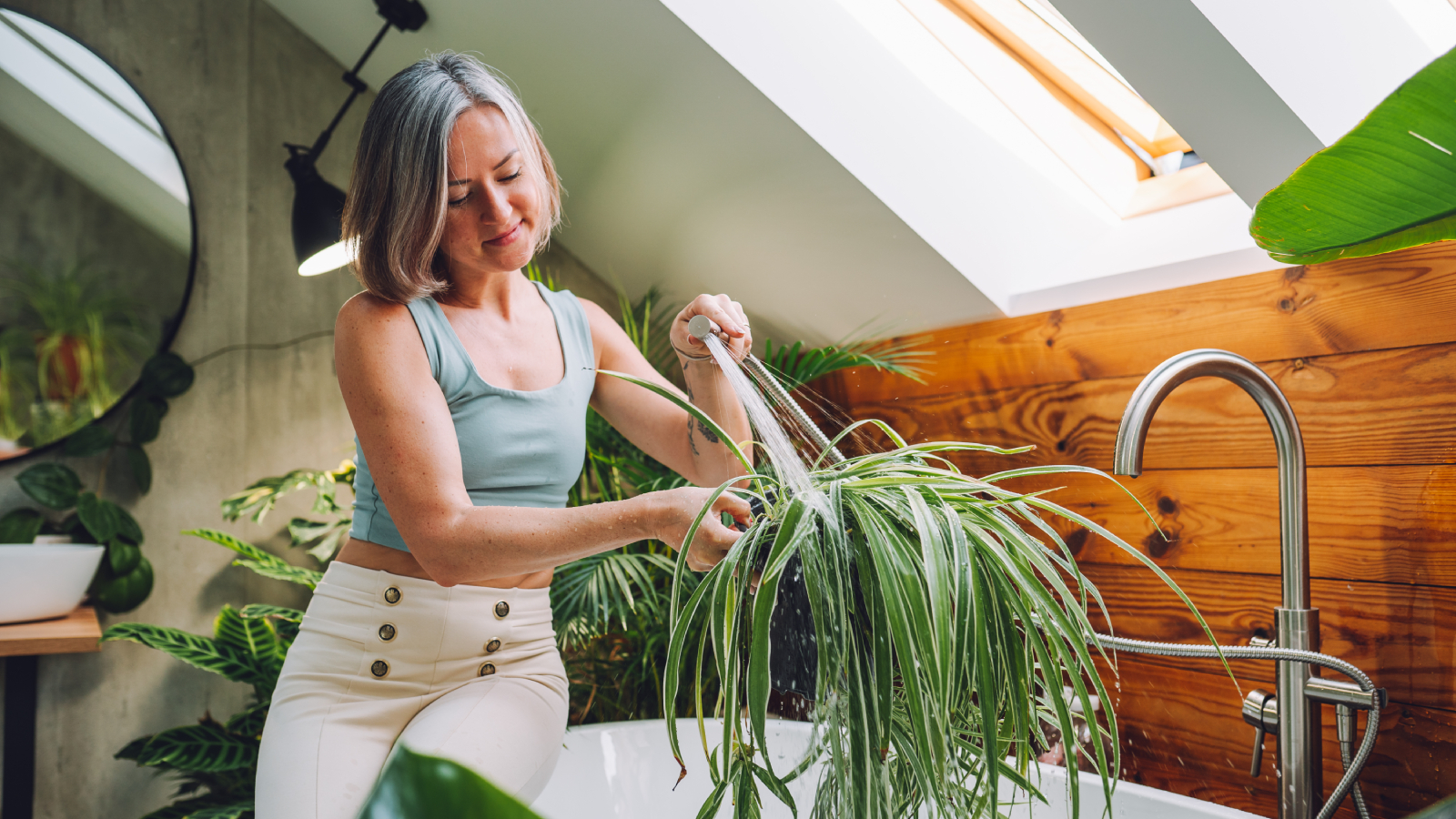How Often Should You Water A Spider Plant? Tips To Keep Spider Plants Happy And Healthy
Spider plants are hardy and easy to grow, but they do need proper watering to thrive. Read our tips on how often to water your spider plants.


Amy Draiss
Spider plants are great beginner houseplants with minimal nutrient and water needs but, even so, the question of how often to water a spider plant comes up. So how often do you water a spider plant? As with all houseplants, their environment, type of container and soil as well as growth season matter when it comes to how often you should water a spider plant.
While spider plants are fairly drought tolerant, that doesn't mean they need no water. They do prefer moist soil and should be watered every 7-10 days during their growing season of spring through early fall. Do allow the upper inch (2.5 cm) of soil to dry out before watering.
About Spider Plants
Spider plants are low-maintenance herbaceous perennials native to the coastal regions of South America. These clump-forming beauties have strappy leaves that may be solid green to variegated.
The leaves form out from the central point of the plant and cascade outward. As the plant grows, it produces long wiry stems that can be up to 2 feet (61 cm) in length. At the end of these stems, small, white spider plant flowers appear. After the flowers fade, leaves are formed at the end of the stems becoming plantlets or “spiderettes." It is fun and easy to propagate spiderettes to add more spider plants to your collection. This asexual propagation produces carbon copies of the parent plant.
Spider Plant Care Affects Water Requirements
As mentioned, spider plants are low-maintenance houseplants and as such require little water or fertilizer, but “little” doesn’t mean “none”. Even this easy-going plant requires some care from its caretaker. While spider plants seem to thrive on neglect, they do prefer moderate indirect light, average home temps, and occasional fertilization during their growing season.
Spider plants have thick, fleshy rhizomes that store water which is why it is a great plant for those whose forte isn’t remembering to water! Additionally, spider plants are sensitive to fluoridated water. If your water has been fluoridated, plan on watering your spider plant with either distilled or rainwater. Water at the base of the plant thoroughly and allow excess water to drain.

Light
These seemingly impervious plants do need moderate, indirect light. Direct light from a window can burn the sensitive foliage and will dry out the soil faster. This will lead to dry, burnt foliage which makes for a sad looking spider plant.
Sign up for the Gardening Know How newsletter today and receive a free copy of our e-book "How to Grow Delicious Tomatoes".
Temperature & Humidity
Spider plants thrive in average home temperatures. If temps drop below 55 F or rise above 80 F, the plant will suffer.
Humidity levels of 50-60% are a spider plant's preference and most houses are around 40-50%. To add a little more humidity, you can use a sprayer to mist the plant or set its container atop a saucer of pebbles and water. A humidifier used in the room near the plant can also raise the humidity level or grow the plant in the bathroom provided the room has some diffuse light.
Soil & Watering Needs
Spider plants require a well-draining potting medium. Watering too often or having poor-draining soil can lead to problems like root rot and set up a breeding ground for fungus gnats.
Spider Plant Nutrient Needs & Watering
Fertilize spider plants with diluted all-purpose houseplant food twice a month during the growing season. Avoid fertilizing when the plant is dormant during the late fall into winter months. Your spider plant might not need to be watered as frequently in the dormant season, but check the soil regularly to ensure it doesn’t dry out too much.

Problems & Disease
These hardy indoor plants generally have few diseases, however they can get tip burn from too much direct light, overwatering, or mineral buildup from using tap water. Overwatering can also result in root rot.
Frequently Asked Questions
Can you grow spider plants only in water?
Yes, for a time you can grow spider plants in water. You can take some “spiderettes,” or spider plant babies, and put them in filtered water to get their roots growing. Once they have little roots, it is a good idea to place them in soil so they can get the nutrients they need to thrive.
How do I know if my spider plant needs water?
A good way to check if your spider plant needs water is to gently stick a finger into the soil to see if it is dry. You should water your spider plant if the top inch of soil is dry to the touch.
This article features products available from third-party vendors in the Gardening Know How Shop.

Amy Grant has been gardening for 30 years and writing for 15. A professional chef and caterer, Amy's area of expertise is culinary gardening.
- Amy DraissDigital Community Manager